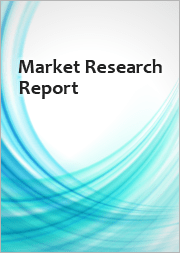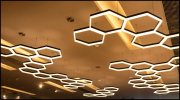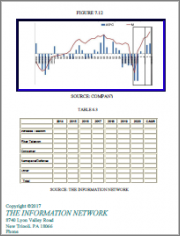
|
시장보고서
상품코드
1572063
세계의 미술관 및 박물관 조명 시장 : 부문별 예측(2025-2030년)Art & Museum Lighting Market by Application (Indoor Lighting, Outdoor Lighting), Technology (Conventional Lighting, Smart Lighting), Lighting Mode - Global Forecast 2025-2030 |
||||||
미술관 및 박물관 조명(Art & Museum Lighting) 시장의 2023년 시장 규모는 15억 9,000만 달러였으며, 2024년에는 16억 6,000만 달러에 달할 것으로 추정 되며, CAGR 4.65%로 성장하며, 2030년에는 21억 9,000만 달러에 도달할 것으로 예측됩니다.
미술관 및 박물관 조명 시장은 문화 기관에서 예술 작품과 역사적 유물의 전시 및 보존을 향상시키기 위해 설계된 다양한 전문 조명 솔루션을 포함합니다. 이러한 조명 시스템은 전시품의 미적, 역사적 가치를 강조하는 동시에 소재를 손상시킬 수 있는 빛 노출을 최소화하여 전시품 주변 환경을 제어하는 데 매우 중요합니다. 갤러리와 박물관의 스팟 및 주변 조명은 유물의 무결성을 손상시키지 않으면서 최적의 가시성을 보장하도록 설계된 필수 애플리케이션입니다. 이러한 조명은 보존, 에너지 효율성, 예술품의 시각적 선명도에 대한 지속적인 수요에서 비롯된 것입니다. 보존과 미적 요구 사항을 모두 충족하는 에너지 효율적이고 오래 지속되며 맞춤형 솔루션을 제공하는 LED 조명 기술의 발전으로 시장 성장이 촉진되고 있습니다. 제조업체와 기술 제공업체가 스마트 조명 시스템과 자동화를 활용하여 맞춤형 경험과 실시간 환경 모니터링을 위해 IoT와 AI를 통합할 수 있는 상당한 기회가 있습니다. 하지만 높은 설치 비용과 지속적인 유지보수의 필요성, 다양한 예술 작품 및 전시 공간과의 호환성 보장 등의 과제가 남아 있습니다. 또한, 공공 기관의 예산 제약으로 인해 시장 확대가 제한될 수 있습니다. 혁신가들은 다양한 전시 레이아웃과 요구 사항을 충족하는 적응 가능하고 역동적인 조명 옵션과 함께 지속 가능성 및 재생 에너지 사용을 활용하는 솔루션을 모색할 수 있습니다. 몰입형 조명 경험을 개발하기 위해 기술 기업과의 업계 간 협업도 유익한 결과를 가져올 수 있습니다. 따라서 이 시장은 빠른 기술 발전이 특징이지만 비용 효율성과 통합 문제를 해결해야 합니다. 성장 잠재력이 있는 기업은 예술품 보존 및 전시의 진화하는 수요를 충족하기 위해 기술적 정교함과 비용 효율성을 결합한 맞춤형 솔루션을 제공하는 데 집중해야 합니다.
| 주요 시장 통계 | |
|---|---|
| 기준연도(2023년) | 15억 9,000만 달러 |
| 추정연도(2024년) | 16억 6,000만 달러 |
| 예측연도(2030년) | 21억 9,000만 달러 |
| CAGR(%) | 4.65% |
시장 역학 : 급속히 진화하는 미술관 및 박물관 조명 시장의 주요 인사이트
미술관 및 박물관 조명 시장은 수요 및 공급의 역동적인 상호 작용에 의해 변모하고 있습니다. 이러한 시장 역학의 진화를 이해함으로써 기업은 충분한 정보를 바탕으로 투자결정, 전략적 결정 정밀화, 새로운 비즈니스 기회 획득에 대비할 수 있습니다. 이러한 동향을 종합적으로 파악함으로써 기업은 정치적, 지리적, 기술적, 사회적, 경제적인 영역에 걸친 다양한 리스크를 경감할 수 있음과 동시에, 소비자 행동과 그것이 제조 비용이나 구매 동향에 미치는 영향을 보다 명확하게 이해할 수 있습니다.
- 시장 성장 촉진요인
- 미술관 및 박물관 조명 시장에서 에너지 효율이 높은 조명 솔루션에 대한 수요 증가
- 미술관 및 박물관에서 시각 체험의 향상과 보존 기술의 중요성 증가
- LED 기술의 급속한 진보로 미술품에 대한 빛의 제어와 품질 향상
- 미술관이나 아트 스페이스의 개수나 근대화에 대한 정부의 대처나 자금 증가
- 시장 성장 억제요인
- 규제에 대한 대응이나 기준에 의해 코스트가 상승해, 제품 개발이나 유통이 복잡해질 가능성
- 원재료 가격 변동은 제조업체의 생산 비용과 수익성에 영향
- 시장 기회
- 미술관 및 박물관에서 감상 체험을 향상시키는 조정 가능한 백색 조명의 채택
- 미술관 및 박물관의 에너지 절약과 전시의 질을 향상시키는 LED 조명 솔루션에 주목의 고조
- 미술관 및 박물관 특유의 조명 요건을 충족시키기 위한 특수 조명기구의 개발
- 시장 과제
- 에너지 효율적인 조명 솔루션의 도입과 동시에 미술품의 무결성을 유지하는 복잡한 과제
- 역사적인 미술관에서 미적 센스의 향상과 기능적인 조명 요구의 밸런스 조정
Portre's Five Forces : 미술관 및 박물관 조명 시장을 탐색하는 전략 도구
Porter's Five Forces 프레임워크는 시장 상황경쟁 구도를 이해하는 중요한 도구입니다. Porter's Five Forces 프레임워크는 기업의 경쟁력을 평가하고 전략적 기회를 탐구하는 명확한 기술을 제공합니다. 이 프레임워크는 기업이 시장 내 세력도를 평가하고 신규 사업의 수익성을 판단하는 데 도움이 됩니다. 이러한 통찰을 통해 기업은 자사의 강점을 활용하고, 약점을 해결하고, 잠재적인 과제를 피할 수 있으며, 보다 탄력적인 시장 포지셔닝을 보장할 수 있습니다.
PESTLE 분석 : 미술관 및 박물관 조명 시장에서 외부로부터 영향 파악
외부 거시 환경 요인은 미술관 및 박물관 조명 시장의 성과 역학을 형성하는 데 매우 중요한 역할을 합니다. 정치적, 경제적, 사회적, 기술적, 법적, 환경적 요인 분석은 이러한 영향을 탐색하는 데 필요한 정보를 제공합니다. PESTLE 요인을 조사함으로써 기업은 잠재적인 위험과 기회를 더 잘 이해할 수 있습니다. 이 분석을 통해 기업은 규제, 소비자 선호, 경제 동향의 변화를 예측하고 앞으로 예상되는 적극적인 의사 결정을 할 준비를 할 수 있습니다.
시장 점유율 분석 : 미술관 및 박물관 조명 시장에서경쟁 구도의 파악
미술관 및 박물관 조명 시장의 상세한 시장 점유율 분석을 통해 공급업체의 성과를 종합적으로 평가할 수 있습니다. 기업은 수익, 고객 기반, 성장률 등 주요 지표를 비교하여 경쟁 포지셔닝을 밝힐 수 있습니다. 이 분석을 통해 시장 집중, 단편화, 통합 동향을 밝혀내고 벤더들은 경쟁이 치열해지는 가운데 자사의 지위를 높이는 전략적 의사 결정을 내리는 데 필요한 지식을 얻을 수 있습니다.
FPNV 포지셔닝 매트릭스 : 미술관 및 박물관 조명 시장에서 공급업체의 성과 평가
FPNV 포지셔닝 매트릭스는 미술관 및 박물관 조명 시장에서 공급업체를 평가하는 중요한 도구입니다. 이 행렬을 통해 비즈니스 조직은 공급업체의 비즈니스 전략과 제품 만족도를 기준으로 평가하여 목표에 맞는 충분한 정보를 바탕으로 의사 결정을 내릴 수 있습니다. 네 가지 사분면을 통해 공급업체를 명확하고 정확하게 세분화하여 전략 목표에 가장 적합한 파트너 및 솔루션을 파악할 수 있습니다.
전략 분석 및 추천 : 미술관 및 박물관 조명 시장에서 성공으로 가는 길 찾기
미술관 및 박물관 조명 시장의 전략 분석은 시장에서 입지 강화를 목표로 하는 기업에 필수적입니다. 주요 자원, 역량 및 성과 지표를 검토함으로써 기업은 성장 기회를 파악하고 개선을 위해 노력할 수 있습니다. 이러한 접근 방식을 통해 경쟁 구도에서 과제를 극복하고 새로운 비즈니스 기회를 활용하여 장기적인 성공을 거둘 수 있는 체제를 구축할 수 있습니다.
이 보고서는 주요 관심 분야를 포괄하는 시장의 종합적인 분석을 제공합니다.
1. 시장 침투 : 현재 시장 환경의 상세한 검토, 주요 기업의 광범위한 데이터, 시장 도달범위 및 전반적인 영향력 평가를 제공합니다.
2. 시장 개척도 : 신흥 시장 성장 기회를 파악하고 기존 분야의 확장 가능성을 평가하며 미래 성장을 위한 전략적 로드맵을 제공합니다.
3. 시장 다양화 : 최근 제품 출시, 미개척 지역, 산업의 주요 진보, 시장을 형성하는 전략적 투자를 분석합니다.
4. 경쟁 평가 및 정보 : 경쟁 구도를 철저히 분석하여 시장 점유율, 사업 전략, 제품 포트폴리오, 인증, 규제 당국 승인, 특허 동향, 주요 기업의 기술 진보 등을 검증합니다.
5. 제품 개발 및 혁신 : 향후 시장 성장을 가속할 것으로 예상되는 최첨단 기술, R&D 활동, 제품 혁신을 강조합니다.
또한 이해관계자가 충분한 정보를 얻고 의사결정을 할 수 있도록 중요한 질문에 대답하고 있습니다.
1. 현재 시장 규모와 향후 성장 예측은?
2. 최고의 투자 기회를 제공하는 제품, 부문 및 지역은?
3. 시장을 형성하는 주요 기술 동향과 규제의 영향은?
4. 주요 벤더의 시장 점유율과 경쟁 포지션은?
5. 벤더 시장 진입·철수 전략의 원동력이 되는 수익원과 전략적 기회는?
목차
제1장 서문
제2장 조사 방법
제3장 주요 요약
제4장 시장 개요
제5장 시장 인사이트
- 시장 역학
- 성장 촉진요인
- 에너지 효율이 높은 조명 솔루션에 대한 수요가 증가
- 미술관 및 박물관에서 시각 체험과 보존 기술의 향상의 중요성 증가
- LED 기술의 급속한 진보로 미술품에 대한 빛의 제어와 품질 향상
- 박물관이나 아트스페이스의 개보수와 근대화를 위한 정부의 대처와 자금 증가
- 억제요인
- 규제 준수와 기준은 비용을 증가시켜 제품 개발과 유통을 복잡하게 함
- 원재료 가격 변동은 제조업체의 생산 비용과 수익성에 영향
- 기회
- 미술관 및 박물관에서 감상 체험을 향상시키기 위해 조광 가능한 백색 조명을 채택
- 박물관의 에너지 절약과 전시품질의 향상을 목적으로 한 LED 조명 솔루션에 대한 주목
- 미술관 및 박물관의 독특한 조명 요건을 충족하는 특수한 조명기구의 개발
- 과제
- 에너지 효율적인 조명 솔루션을 구현하면서 아트워크의 무결성을 유지하는 복잡한 과제를 극복
- 역사박물관에서 미관의 향상과 기능적인 조명의 요구의 밸런스
- 성장 촉진요인
- 시장 세분화 분석
- Porter's Five Forces 분석
- PESTLE 분석
- 정치적
- 경제적
- 사회적
- 기술적
- 법적
- 환경적
제6장 미술관 및 박물관 조명 시장 : 용도별
- 실내 조명
- 아트 갤러리
- 문화센터
- 전시홀
- 박물관
- 옥외 조명
- 외관 조명
- 기념비 조명
제7장 미술관 및 박물관 조명 시장 : 기술별
- 기존 조명
- 수동 스위치 조명
- 정적 조명
- 스마트 조명
- 리모콘 조명
- 센서 기반 조명
제8장 미술관 및 박물관 조명 시장 : 조명 모드별
- 악센트 조명
- 지향성 스포트라이트
- 월워셔
- 앰비언트 조명
- 일반 조명
- 분위기 조명
- 작업 조명
- 아트워크 조명
- 전시 케이스 조명
제9장 아메리카의 미술관 및 박물관 조명 시장
- 아르헨티나
- 브라질
- 캐나다
- 멕시코
- 미국
제10장 아시아 태평양의 미술관 및 박물관 조명 시장
- 호주
- 중국
- 인도
- 인도네시아
- 일본
- 말레이시아
- 필리핀
- 싱가포르
- 한국
- 대만
- 태국
- 베트남
제11장 유럽·중동 및 아프리카의 미술관 및 박물관 조명 시장
- 덴마크
- 이집트
- 핀란드
- 프랑스
- 독일
- 이스라엘
- 이탈리아
- 네덜란드
- 나이지리아
- 노르웨이
- 폴란드
- 카타르
- 러시아
- 사우디아라비아
- 남아프리카공화국
- 스페인
- 스웨덴
- 스위스
- 터키
- 아랍에미리트(UAE)
- 영국
제12장 경쟁 구도
- 시장 점유율 분석(2023년)
- FPNV 포지셔닝 매트릭스(2023년)
- 경쟁 시나리오 분석
- 전략 분석 및 제안
The Art & Museum Lighting Market was valued at USD 1.59 billion in 2023, expected to reach USD 1.66 billion in 2024, and is projected to grow at a CAGR of 4.65%, to USD 2.19 billion by 2030.
The Art & Museum Lighting market encompasses a range of specialized lighting solutions designed to enhance the presentation and preservation of artworks and historical artifacts in cultural institutions. These lighting systems are crucial for controlling the environment around exhibits, by minimizing light exposure that can degrade materials while highlighting the aesthetic and historical value of the pieces. Essential applications include spot and ambient lighting in galleries and museums, designed to ensure optimal visibility without compromising the artifacts' integrity. The necessity arises from the enduring demand for preservation, energy efficiency, and visual clarity in art presentation. Market growth is propelled by advancements in LED lighting technology, which offers energy-efficient, longer-lasting, and customizable solutions, meeting both conservational and aesthetic requirements. There is a significant opportunity for manufacturers and technology providers to capitalize on smart lighting systems and automation, integrating IoT and AI for customized experiences and real-time environmental monitoring. However, challenges remain in the high cost of installation and the necessity for ongoing maintenance, as well as ensuring compatibility with a wide range of art pieces and exhibition spaces. Furthermore, budget constraints in public-funded institutions can restrict market expansion. Innovators have the potential to explore solutions that leverage sustainability and renewable energy usage alongside adaptable and dynamic lighting options that cater to diverse exhibition layouts and needs. Cross-industry collaborations with tech companies to develop immersive lighting experiences can also be fruitful. The market is therefore characterized by rapid technological advancements but needs to address cost-effectiveness and integration challenges. Firms poised for growth should focus on providing bespoke solutions that combine technical sophistication with cost efficiency to satisfy the evolving demands of art preservation and exhibition.
| KEY MARKET STATISTICS | |
|---|---|
| Base Year [2023] | USD 1.59 billion |
| Estimated Year [2024] | USD 1.66 billion |
| Forecast Year [2030] | USD 2.19 billion |
| CAGR (%) | 4.65% |
Market Dynamics: Unveiling Key Market Insights in the Rapidly Evolving Art & Museum Lighting Market
The Art & Museum Lighting Market is undergoing transformative changes driven by a dynamic interplay of supply and demand factors. Understanding these evolving market dynamics prepares business organizations to make informed investment decisions, refine strategic decisions, and seize new opportunities. By gaining a comprehensive view of these trends, business organizations can mitigate various risks across political, geographic, technical, social, and economic domains while also gaining a clearer understanding of consumer behavior and its impact on manufacturing costs and purchasing trends.
- Market Drivers
- Increasing demand for energy-efficient lighting solutions in the art & museum lighting market
- Growing importance of enhancing visual experiences and preservation techniques in museums and art galleries
- Rapid advancements in LED technology providing better control and quality of light for artworks
- Rising government initiatives and funding for the renovation and modernization of museums and art spaces
- Market Restraints
- Regulatory compliance and standards can increase costs and complicate product development and distribution
- Fluctuating raw material prices can impact production costs and profitability for manufacturers
- Market Opportunities
- Employment of tunable white lighting to enhance viewer experience in museums and art galleries
- Rising focus on LED lighting solutions to improve energy savings and exhibit quality in museums
- Development of specialized lighting fixtures to meet unique art and museum lighting requirements
- Market Challenges
- Navigating the complexities of preserving artwork integrity while implementing energy-efficient lighting solutions
- Balancing between aesthetic enhancements and functional illumination needs in historical museum settings
Porter's Five Forces: A Strategic Tool for Navigating the Art & Museum Lighting Market
Porter's five forces framework is a critical tool for understanding the competitive landscape of the Art & Museum Lighting Market. It offers business organizations with a clear methodology for evaluating their competitive positioning and exploring strategic opportunities. This framework helps businesses assess the power dynamics within the market and determine the profitability of new ventures. With these insights, business organizations can leverage their strengths, address weaknesses, and avoid potential challenges, ensuring a more resilient market positioning.
PESTLE Analysis: Navigating External Influences in the Art & Museum Lighting Market
External macro-environmental factors play a pivotal role in shaping the performance dynamics of the Art & Museum Lighting Market. Political, Economic, Social, Technological, Legal, and Environmental factors analysis provides the necessary information to navigate these influences. By examining PESTLE factors, businesses can better understand potential risks and opportunities. This analysis enables business organizations to anticipate changes in regulations, consumer preferences, and economic trends, ensuring they are prepared to make proactive, forward-thinking decisions.
Market Share Analysis: Understanding the Competitive Landscape in the Art & Museum Lighting Market
A detailed market share analysis in the Art & Museum Lighting Market provides a comprehensive assessment of vendors' performance. Companies can identify their competitive positioning by comparing key metrics, including revenue, customer base, and growth rates. This analysis highlights market concentration, fragmentation, and trends in consolidation, offering vendors the insights required to make strategic decisions that enhance their position in an increasingly competitive landscape.
FPNV Positioning Matrix: Evaluating Vendors' Performance in the Art & Museum Lighting Market
The Forefront, Pathfinder, Niche, Vital (FPNV) Positioning Matrix is a critical tool for evaluating vendors within the Art & Museum Lighting Market. This matrix enables business organizations to make well-informed decisions that align with their goals by assessing vendors based on their business strategy and product satisfaction. The four quadrants provide a clear and precise segmentation of vendors, helping users identify the right partners and solutions that best fit their strategic objectives.
Strategy Analysis & Recommendation: Charting a Path to Success in the Art & Museum Lighting Market
A strategic analysis of the Art & Museum Lighting Market is essential for businesses looking to strengthen their global market presence. By reviewing key resources, capabilities, and performance indicators, business organizations can identify growth opportunities and work toward improvement. This approach helps businesses navigate challenges in the competitive landscape and ensures they are well-positioned to capitalize on newer opportunities and drive long-term success.
Key Company Profiles
The report delves into recent significant developments in the Art & Museum Lighting Market, highlighting leading vendors and their innovative profiles. These include Acolyte Industries Inc., Altman Lighting Co. Inc., Artemide S.p.A, Axo Light SRL, Bartco Lighting, Inc., Bega Lighting, Castaldi Lighting S.r.l., David Trubridge Ltd., Fagerhult Group, FLOS USA, Inc., GE Current, a Daintree company, Hubbell Lighting, Ligman Lighting USA, Inc., Louis Poulsen A/S, Luceplan Lighting, LumenArt, Ltd., MaxLite Inc., Musco Lighting, NVC International Holdings Limited, and Orion Energy Systems, Inc..
Market Segmentation & Coverage
This research report categorizes the Art & Museum Lighting Market to forecast the revenues and analyze trends in each of the following sub-markets:
- Based on Application, market is studied across Indoor Lighting and Outdoor Lighting. The Indoor Lighting is further studied across Art Galleries, Cultural Centers, Exhibition Halls, and Museums. The Outdoor Lighting is further studied across Facade Lighting and Monument Lighting.
- Based on Technology, market is studied across Conventional Lighting and Smart Lighting. The Conventional Lighting is further studied across Manual Switch Lighting and Static Lighting. The Smart Lighting is further studied across Remote-Controlled Lighting and Sensor-Based Lighting.
- Based on Lighting Mode, market is studied across Accent Lighting, Ambient Lighting, and Task Lighting. The Accent Lighting is further studied across Directional Spotlights and Wall Washers. The Ambient Lighting is further studied across General Lighting and Mood Lighting. The Task Lighting is further studied across Artwork Lighting and Display Case Lighting.
- Based on Region, market is studied across Americas, Asia-Pacific, and Europe, Middle East & Africa. The Americas is further studied across Argentina, Brazil, Canada, Mexico, and United States. The United States is further studied across California, Florida, Illinois, New York, Ohio, Pennsylvania, and Texas. The Asia-Pacific is further studied across Australia, China, India, Indonesia, Japan, Malaysia, Philippines, Singapore, South Korea, Taiwan, Thailand, and Vietnam. The Europe, Middle East & Africa is further studied across Denmark, Egypt, Finland, France, Germany, Israel, Italy, Netherlands, Nigeria, Norway, Poland, Qatar, Russia, Saudi Arabia, South Africa, Spain, Sweden, Switzerland, Turkey, United Arab Emirates, and United Kingdom.
The report offers a comprehensive analysis of the market, covering key focus areas:
1. Market Penetration: A detailed review of the current market environment, including extensive data from top industry players, evaluating their market reach and overall influence.
2. Market Development: Identifies growth opportunities in emerging markets and assesses expansion potential in established sectors, providing a strategic roadmap for future growth.
3. Market Diversification: Analyzes recent product launches, untapped geographic regions, major industry advancements, and strategic investments reshaping the market.
4. Competitive Assessment & Intelligence: Provides a thorough analysis of the competitive landscape, examining market share, business strategies, product portfolios, certifications, regulatory approvals, patent trends, and technological advancements of key players.
5. Product Development & Innovation: Highlights cutting-edge technologies, R&D activities, and product innovations expected to drive future market growth.
The report also answers critical questions to aid stakeholders in making informed decisions:
1. What is the current market size, and what is the forecasted growth?
2. Which products, segments, and regions offer the best investment opportunities?
3. What are the key technology trends and regulatory influences shaping the market?
4. How do leading vendors rank in terms of market share and competitive positioning?
5. What revenue sources and strategic opportunities drive vendors' market entry or exit strategies?
Table of Contents
1. Preface
- 1.1. Objectives of the Study
- 1.2. Market Segmentation & Coverage
- 1.3. Years Considered for the Study
- 1.4. Currency & Pricing
- 1.5. Language
- 1.6. Stakeholders
2. Research Methodology
- 2.1. Define: Research Objective
- 2.2. Determine: Research Design
- 2.3. Prepare: Research Instrument
- 2.4. Collect: Data Source
- 2.5. Analyze: Data Interpretation
- 2.6. Formulate: Data Verification
- 2.7. Publish: Research Report
- 2.8. Repeat: Report Update
3. Executive Summary
4. Market Overview
5. Market Insights
- 5.1. Market Dynamics
- 5.1.1. Drivers
- 5.1.1.1. Increasing demand for energy-efficient lighting solutions in the art & museum lighting market
- 5.1.1.2. Growing importance of enhancing visual experiences and preservation techniques in museums and art galleries
- 5.1.1.3. Rapid advancements in LED technology providing better control and quality of light for artworks
- 5.1.1.4. Rising government initiatives and funding for the renovation and modernization of museums and art spaces
- 5.1.2. Restraints
- 5.1.2.1. Regulatory compliance and standards can increase costs and complicate product development and distribution
- 5.1.2.2. Fluctuating raw material prices can impact production costs and profitability for manufacturers
- 5.1.3. Opportunities
- 5.1.3.1. Employment of tunable white lighting to enhance viewer experience in museums and art galleries
- 5.1.3.2. Rising focus on LED lighting solutions to improve energy savings and exhibit quality in museums
- 5.1.3.3. Development of specialized lighting fixtures to meet unique art and museum lighting requirements
- 5.1.4. Challenges
- 5.1.4.1. Navigating the complexities of preserving artwork integrity while implementing energy-efficient lighting solutions
- 5.1.4.2. Balancing between aesthetic enhancements and functional illumination needs in historical museum settings
- 5.1.1. Drivers
- 5.2. Market Segmentation Analysis
- 5.3. Porter's Five Forces Analysis
- 5.3.1. Threat of New Entrants
- 5.3.2. Threat of Substitutes
- 5.3.3. Bargaining Power of Customers
- 5.3.4. Bargaining Power of Suppliers
- 5.3.5. Industry Rivalry
- 5.4. PESTLE Analysis
- 5.4.1. Political
- 5.4.2. Economic
- 5.4.3. Social
- 5.4.4. Technological
- 5.4.5. Legal
- 5.4.6. Environmental
6. Art & Museum Lighting Market, by Application
- 6.1. Introduction
- 6.2. Indoor Lighting
- 6.2.1. Art Galleries
- 6.2.2. Cultural Centers
- 6.2.3. Exhibition Halls
- 6.2.4. Museums
- 6.3. Outdoor Lighting
- 6.3.1. Facade Lighting
- 6.3.2. Monument Lighting
7. Art & Museum Lighting Market, by Technology
- 7.1. Introduction
- 7.2. Conventional Lighting
- 7.2.1. Manual Switch Lighting
- 7.2.2. Static Lighting
- 7.3. Smart Lighting
- 7.3.1. Remote-Controlled Lighting
- 7.3.2. Sensor-Based Lighting
8. Art & Museum Lighting Market, by Lighting Mode
- 8.1. Introduction
- 8.2. Accent Lighting
- 8.2.1. Directional Spotlights
- 8.2.2. Wall Washers
- 8.3. Ambient Lighting
- 8.3.1. General Lighting
- 8.3.2. Mood Lighting
- 8.4. Task Lighting
- 8.4.1. Artwork Lighting
- 8.4.2. Display Case Lighting
9. Americas Art & Museum Lighting Market
- 9.1. Introduction
- 9.2. Argentina
- 9.3. Brazil
- 9.4. Canada
- 9.5. Mexico
- 9.6. United States
10. Asia-Pacific Art & Museum Lighting Market
- 10.1. Introduction
- 10.2. Australia
- 10.3. China
- 10.4. India
- 10.5. Indonesia
- 10.6. Japan
- 10.7. Malaysia
- 10.8. Philippines
- 10.9. Singapore
- 10.10. South Korea
- 10.11. Taiwan
- 10.12. Thailand
- 10.13. Vietnam
11. Europe, Middle East & Africa Art & Museum Lighting Market
- 11.1. Introduction
- 11.2. Denmark
- 11.3. Egypt
- 11.4. Finland
- 11.5. France
- 11.6. Germany
- 11.7. Israel
- 11.8. Italy
- 11.9. Netherlands
- 11.10. Nigeria
- 11.11. Norway
- 11.12. Poland
- 11.13. Qatar
- 11.14. Russia
- 11.15. Saudi Arabia
- 11.16. South Africa
- 11.17. Spain
- 11.18. Sweden
- 11.19. Switzerland
- 11.20. Turkey
- 11.21. United Arab Emirates
- 11.22. United Kingdom
12. Competitive Landscape
- 12.1. Market Share Analysis, 2023
- 12.2. FPNV Positioning Matrix, 2023
- 12.3. Competitive Scenario Analysis
- 12.4. Strategy Analysis & Recommendation
Companies Mentioned
- 1. Acolyte Industries Inc.
- 2. Altman Lighting Co. Inc.
- 3. Artemide S.p.A
- 4. Axo Light SRL
- 5. Bartco Lighting, Inc.
- 6. Bega Lighting
- 7. Castaldi Lighting S.r.l.
- 8. David Trubridge Ltd.
- 9. Fagerhult Group
- 10. FLOS USA, Inc.
- 11. GE Current, a Daintree company
- 12. Hubbell Lighting
- 13. Ligman Lighting USA, Inc.
- 14. Louis Poulsen A/S
- 15. Luceplan Lighting
- 16. LumenArt, Ltd.
- 17. MaxLite Inc.
- 18. Musco Lighting
- 19. NVC International Holdings Limited
- 20. Orion Energy Systems, Inc.






